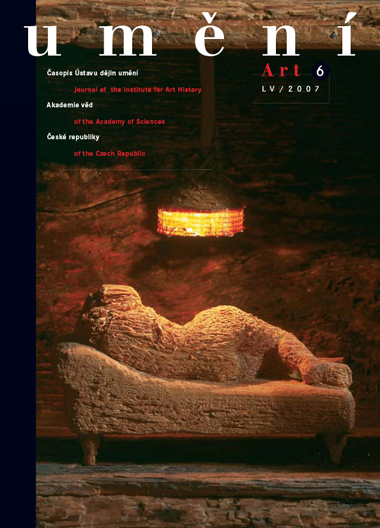Milan Dospěl
Moravský kontext Madony zvané Primavesi
A rather unique expression of the art sphere in Moravia during the last third of the 15th century is to be found in a group of preserved sculptural works whose stylistic roots derive directly from the Austrian Rhine Valley work of the Flemish sculptor Nicolaus Gerhaert of Leyden (†1473). The group of Gerhaert-oriented sculpture in the region, which represents the highest-quality workds of late Gothic sculpture in the Czech Lands, consists today of about two dozen statues preserved primarily in the areas of Brno, Jihlava and Olomouc. They doubtless represent the most extensive fount of this sculptural trend in the Czech Republic. This study deals with two heretofore unknown carvings - the Madonna from the graveyard chapel of St Roch in Strážnice (today the church of the Assumption of the Virgin Mary in Strážnice) and the Madonna from the church of SS Peter and Paul in Svojanov (today the church of St Nicholas in Starý Svojanov), which represent valuable counterparts to the group's key sculptures, such as the well-known Madonna of Olomouc known as the Primavesi, the Madonna of Brno (Moravian Gallery in Brno) and the Mount of Olives sculptural group at Modřice u Brna. Based on a stylistic analysis, the study indicates the relationships between, on the one hand, these works and other domestic, and foreign - chiefly Austrian - works and, on the other, the artefacts of cultural heritage represented by the Gerhaert sculptures of the 1470s. In this group of Moravian sculptures, very close mmutual ties and developmental tendencies are evident, which testify to the homogeneous character of the entire group. These works are traced back to the workshop of an anonymous carver known as the Master of the Madonna of Olomouc, known as the Primavesi, who was one of the most distinctive artists following in the footsteps of Gerhaert of Leyden's art in Central Europe. His activities in the region of Moravia (Brno) may be inferred to have lasted from the late 1470s to the early 1490s.
Full-text in the Digital Library of the Czech Academy of Sciences:
https://kramerius.lib.cas.cz/uuid/uuid:5a207251-4bca-4517-82d8-a572586dad49
< back

